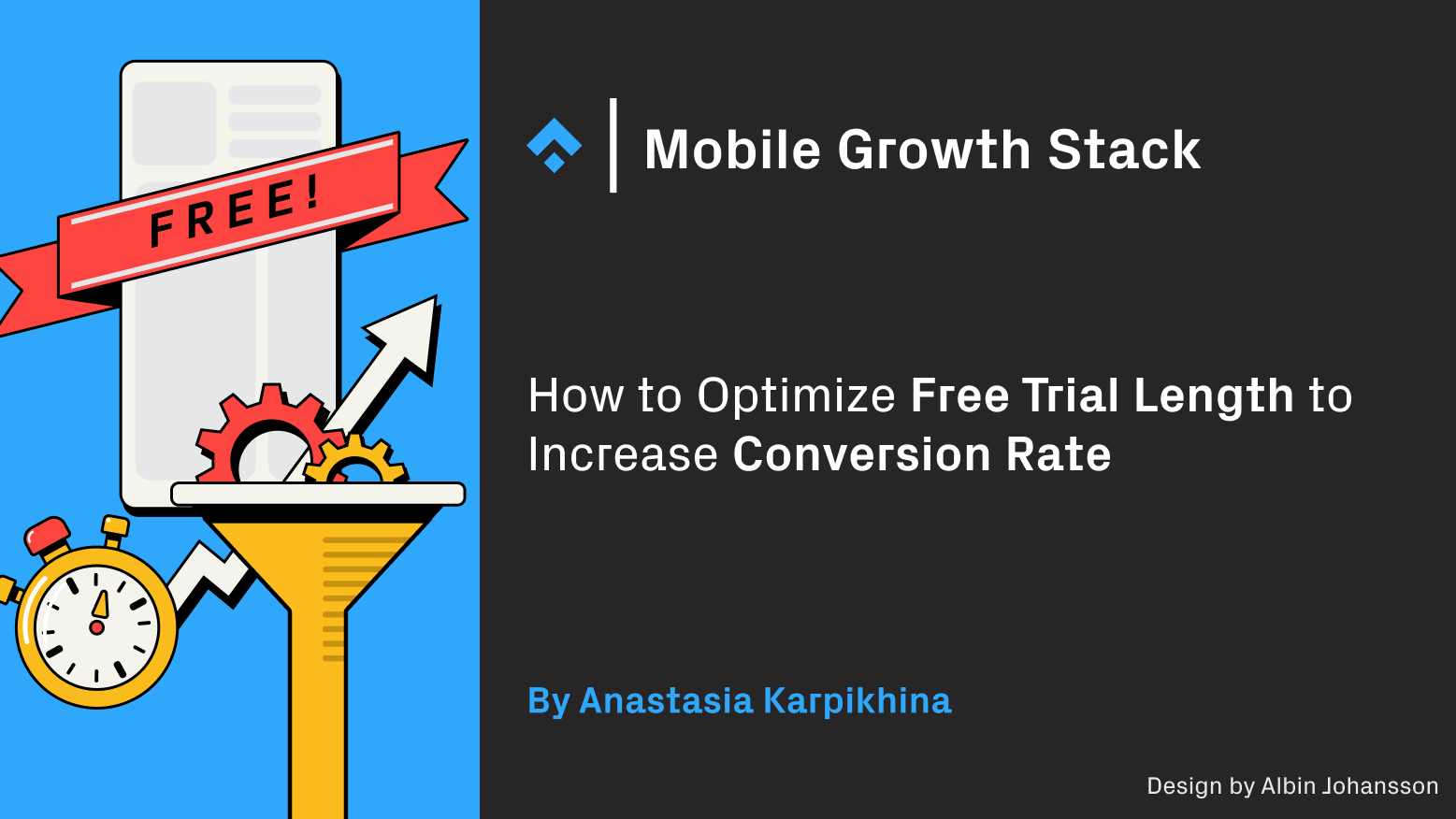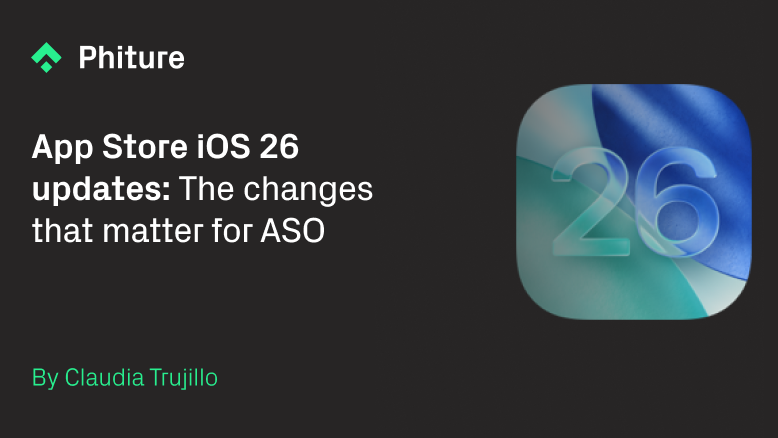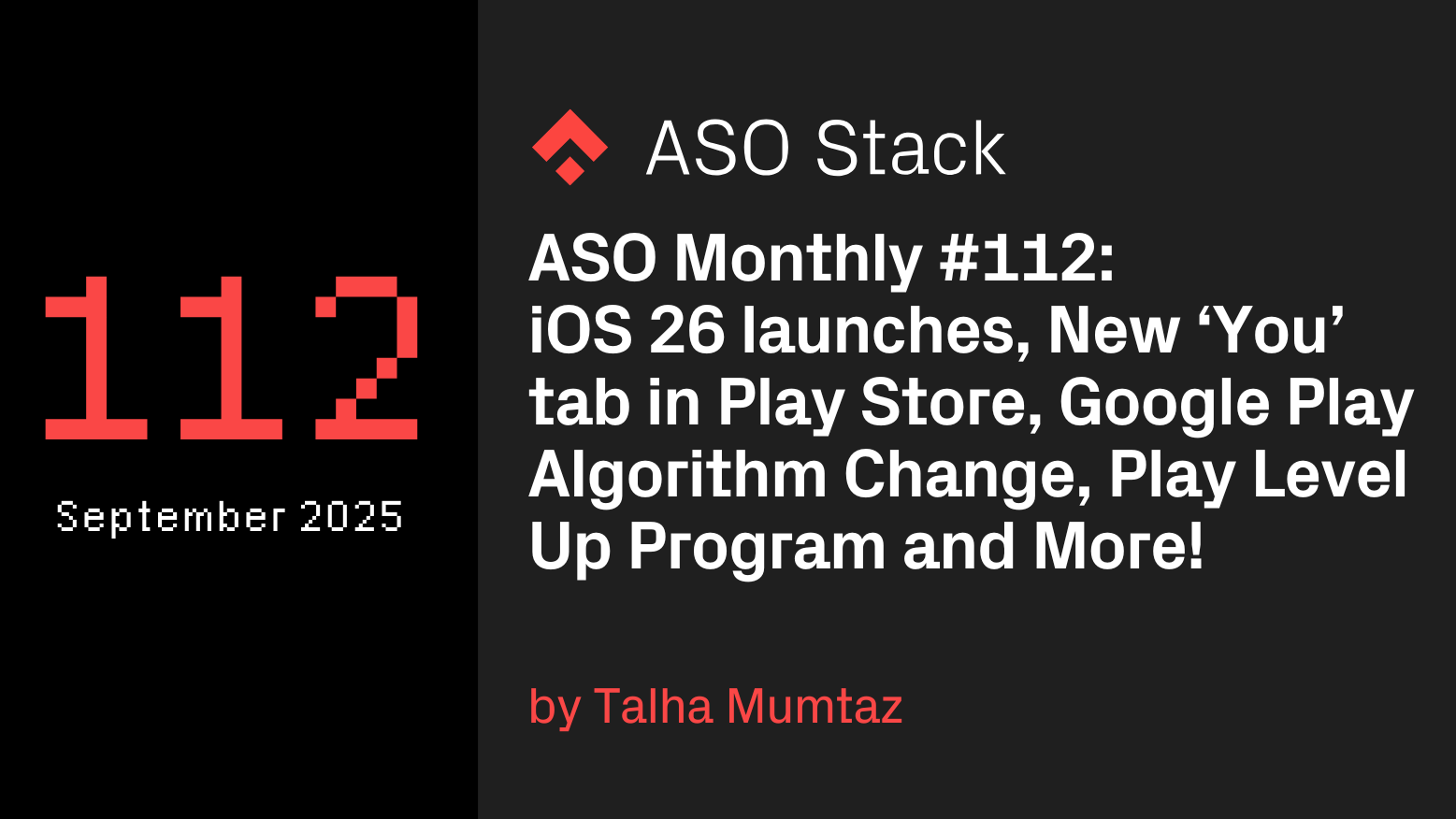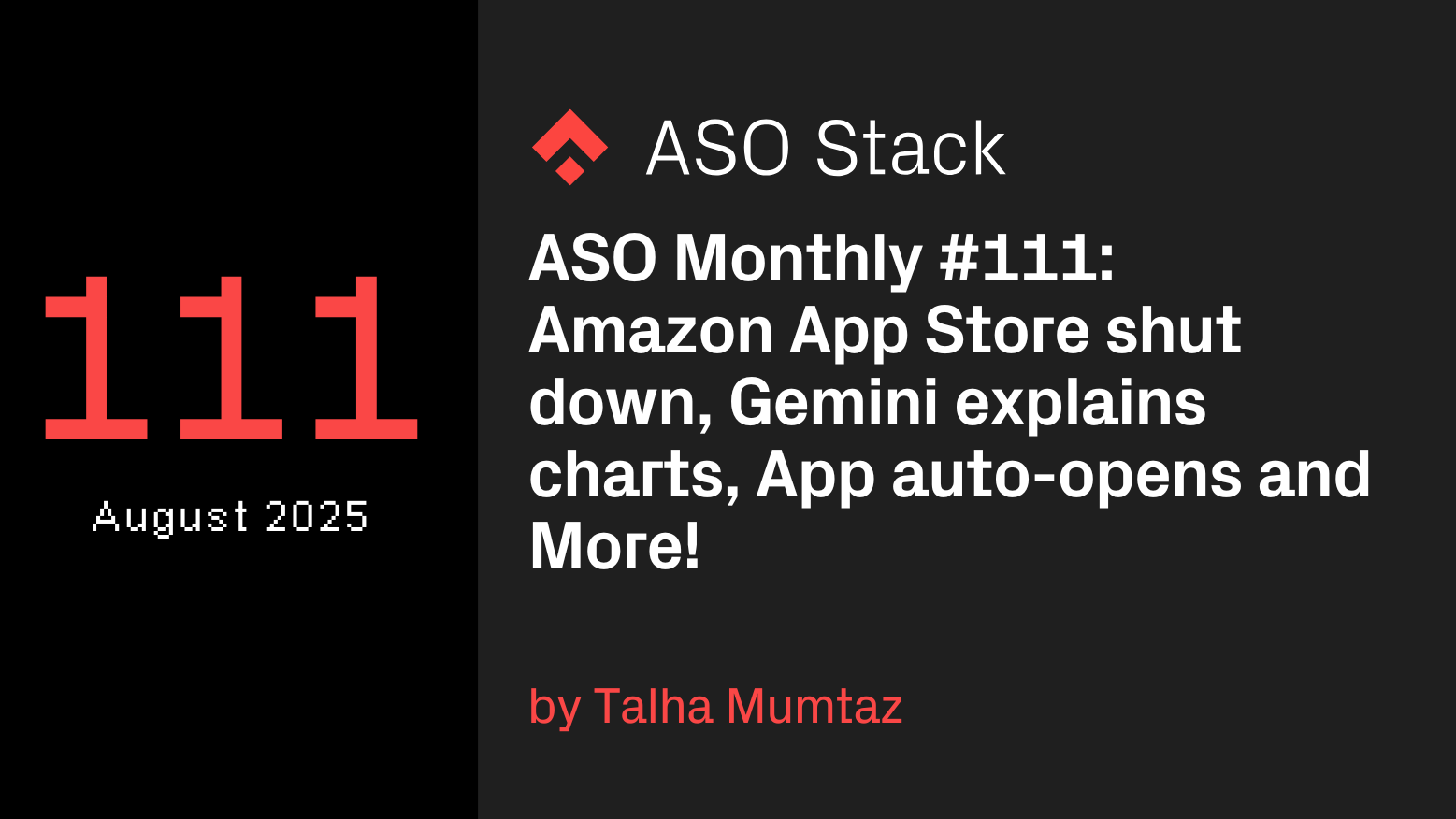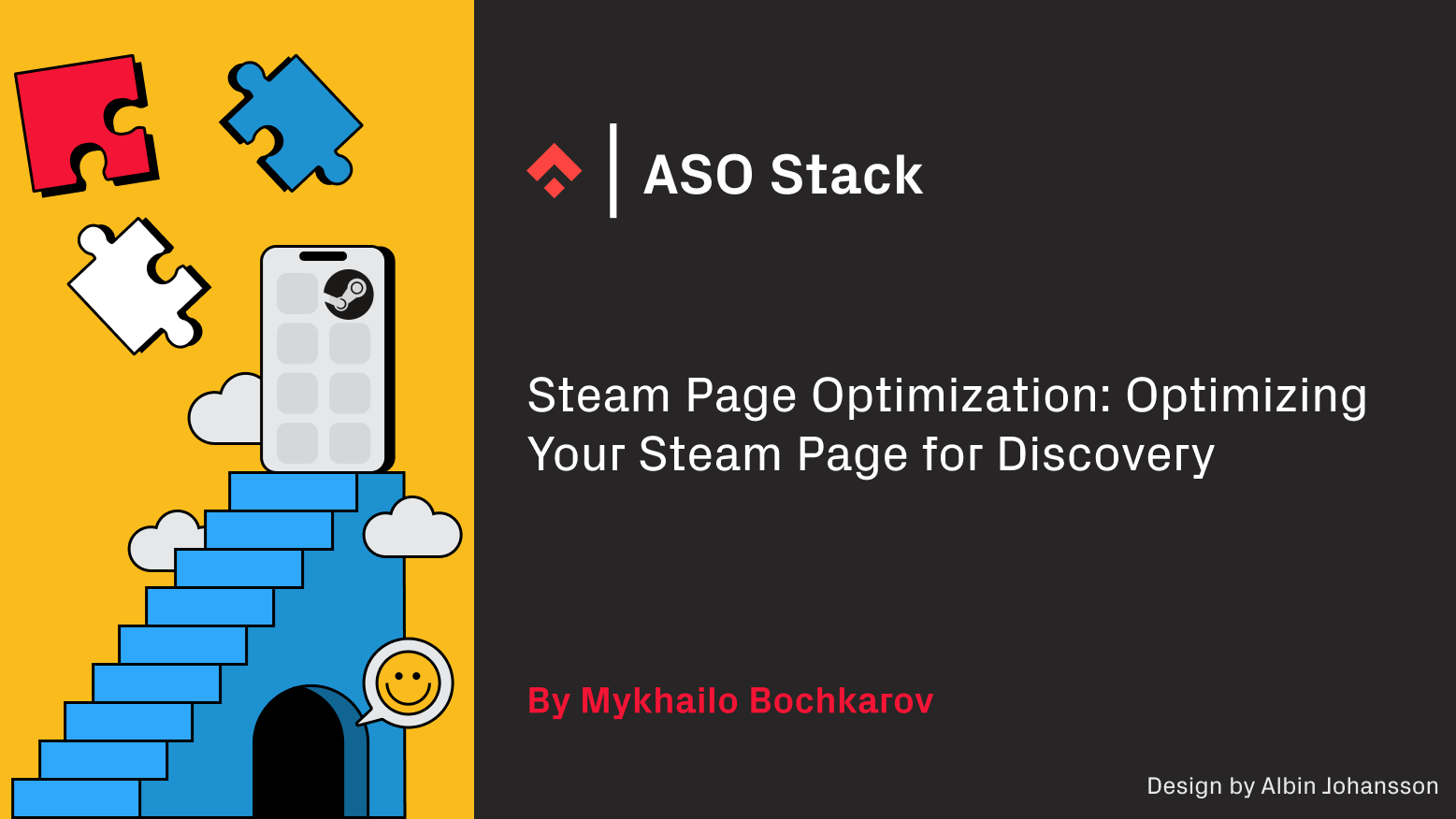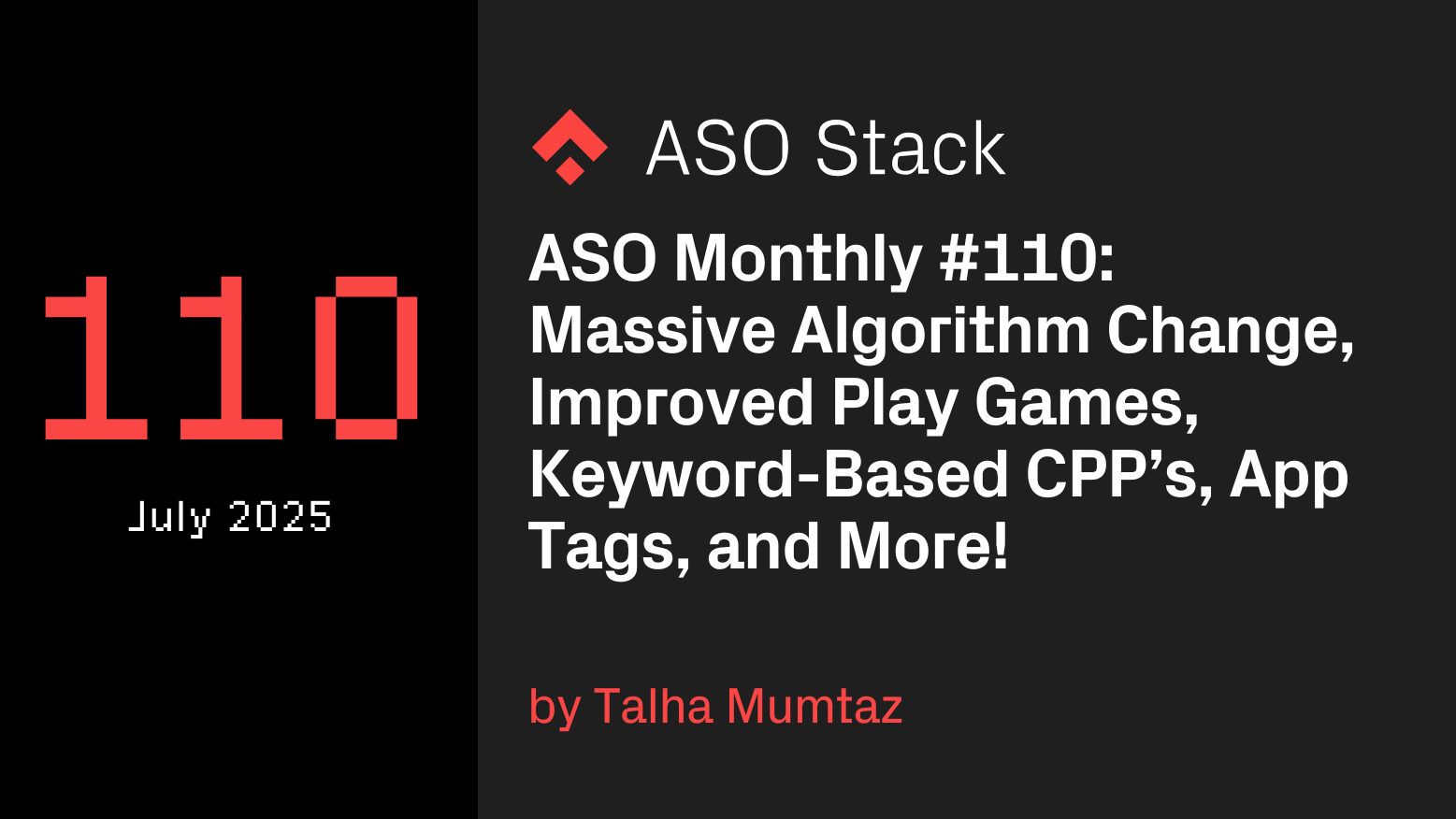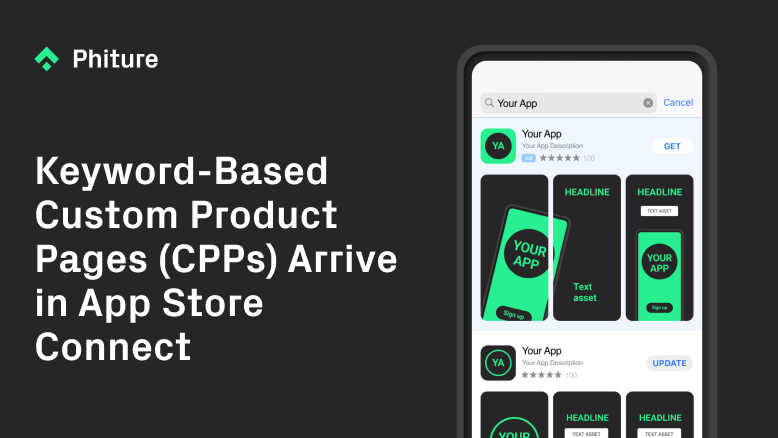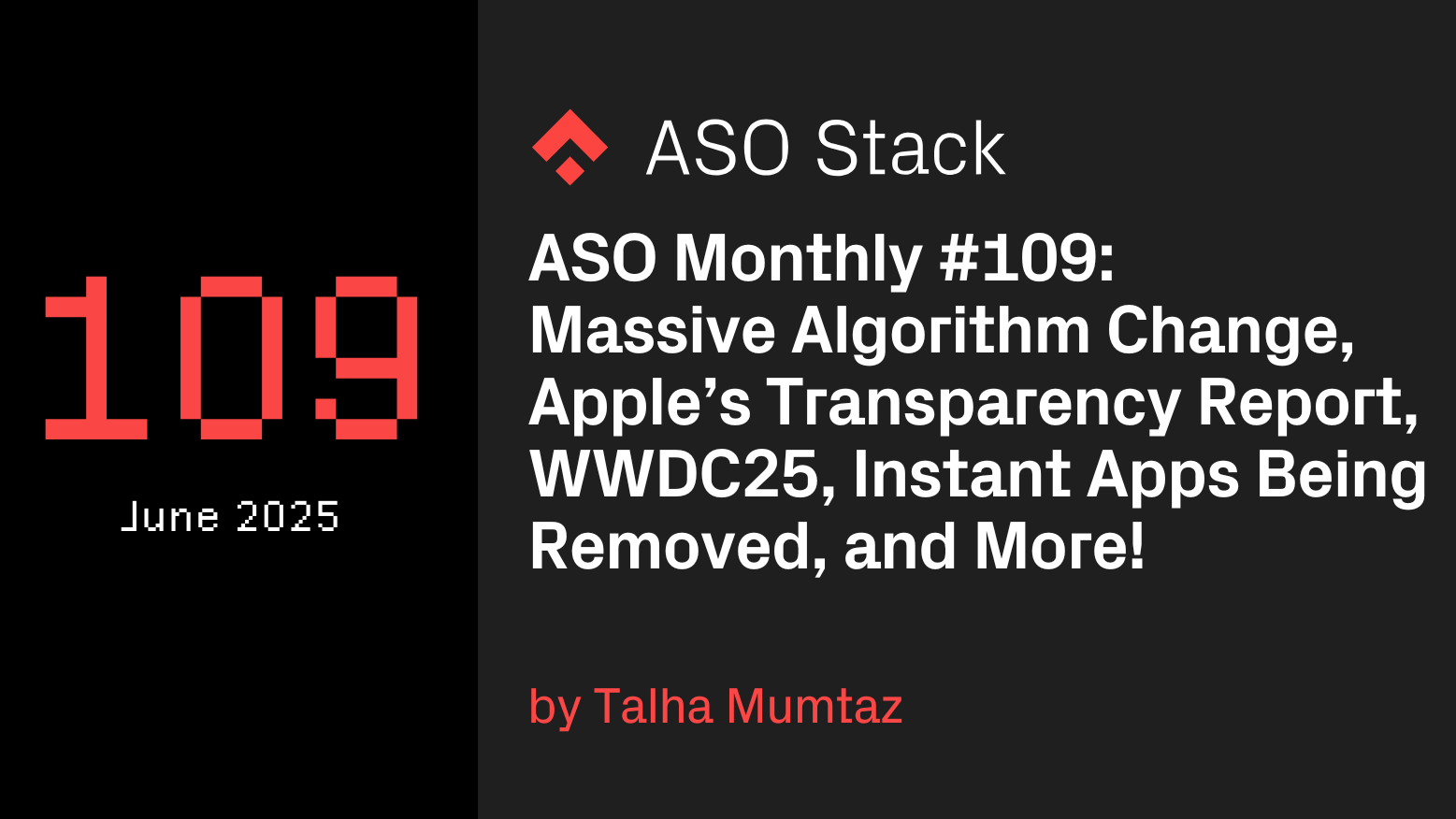This year’s WWDC25 (Apple’s annual developer conference) came with a wave of changes that app developers and marketers should be paying close attention to. From UI overhauls and App Store Connect upgrades to improvements in attribution and automation, this year’s announcements signal a shift toward a smarter, more transparent, and more optimized App Store ecosystem.
Below is our curated breakdown of what matters most, who should care, and how to prepare.
A new look for iOS: “Liquid Glass” design
Apple is rolling out a new visual language with iOS and iPadOS 26. Dubbed “Liquid Glass,” this design introduces glossier, more translucent elements, softened gradients, and a sleeker icon style that aligns closely with the aesthetics of the Vision Pro headset.
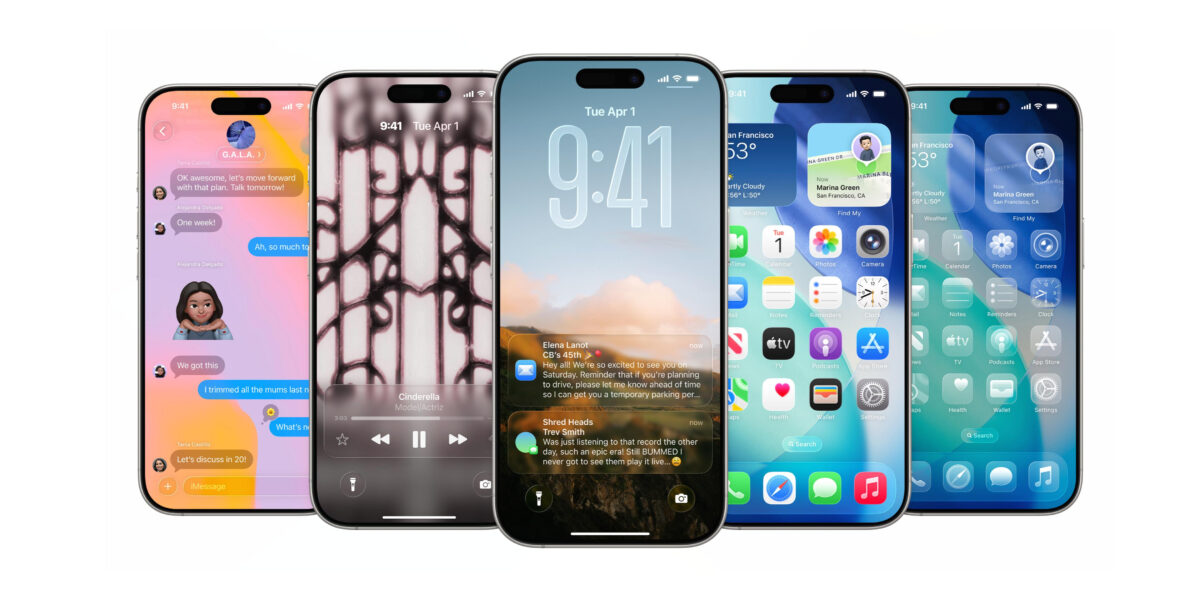
Apart from the pure cosmetic aspect of this change, Apple has historically favored apps that match the system’s visual direction, whether in App Store features, promotional placements, or even perceived app quality. Apps that don’t align with the new style could soon look outdated.
This is relevant for:
- Product and design teams should review current app iconography and interface visuals.
- Growth marketers who may need to align creative assets and app preview videos to reflect the new style.
Apple has updated its Human Interface Guidelines to include guidance for creating dark and tinted app icon variants for iOS and iPadOS, encouraging developers to adopt these new styles to ensure consistency with system app icons and widgets. There’s also a new “Icon Composer” app available for Mac, letting developers and marketers preview their app icons in different environments and settings.
Keywords for Custom Product Pages
Developers will soon be able to assign search keywords to specific Custom Product Pages. These pages are already a powerful tool for targeting different user segments with tailored visuals and messaging and will now be indexable in App Store search.
This change turns Custom Product Pages from purely conversion-focused assets into top-of-funnel discovery tools. It’s particularly useful for:
- Apps with multiple use cases (e.g., productivity tools, fitness apps) that speak to different audiences.
- Subscription apps, where targeted messaging and visuals can drastically affect trial conversions.
Rollout is expected in H2 2025.
Most App Store-related updates are listed on this page here.
App tags become searchable and prominent
App tags, that were previously more of an internal classification system, will now be visible on product pages and in search results. These tags, which are generated using metadata, AI, and human curation, give users an at-a-glance sense of what your app is about.
For marketers, this means that proper metadata hygiene will play a more public role in App Store visibility. Tags are tappable, meaning users can browse other apps with the same tag, creating an SEO-like network of discoverability.
Expected to fully roll out in the US by late 2025.
Over 100 new metrics coming to App Store Connect
Apple is expanding App Analytics in App Store Connect with more than 100 new metrics. These will include deeper insights into subscriptions, offers, and user behavior, all while preserving privacy.
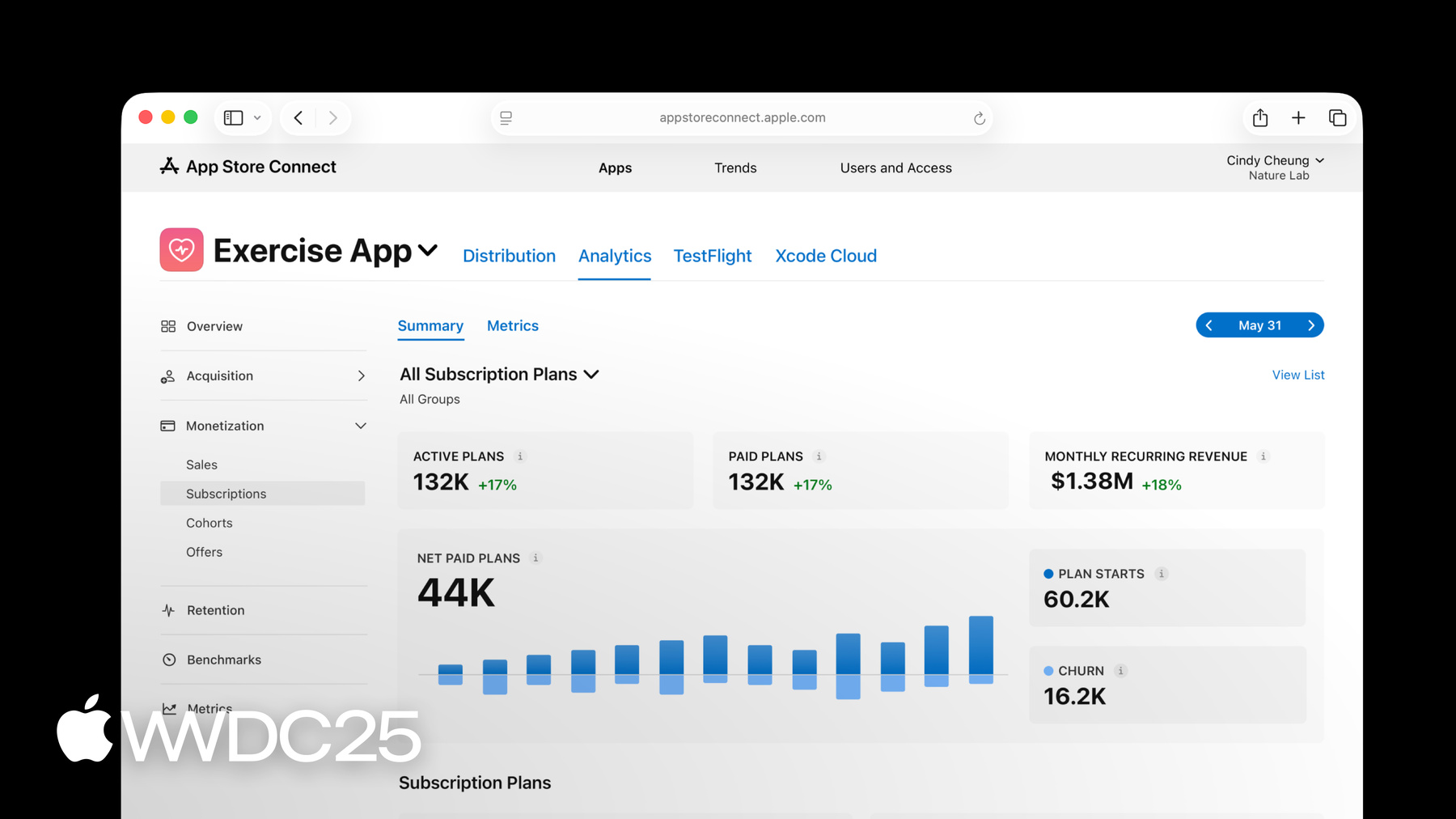
This is a major leap forward for:
- Data and growth teams rely on conversion funnels and cohort tracking.
- Subscription-based apps can now analyze IAP performance with far more granularity.
In addition, you will be able to create cohorts in analytics, allowing you to analyze and compare key metrics for specific user segments over time.
Peer group benchmarks are also being refreshed, offering new ways to compare performance against similar apps. This could support pricing experiments and funnel optimizations.
Offer codes are being expanded to support all types of in-app purchases, including consumables, non-consumables, and non-renewing subscriptions. This feature, previously only available for auto-renewing subs, enables deeper promo strategies and campaign flexibility.
Who benefits:
- Monetization and performance marketing teams, especially those running UA campaigns linked to special in-app offers.
- Apps targeting re-engagement, as offer codes can be used as a hook to bring lapsed users back.
Accessibility Nutrition Labels now on product pages
A new addition to App Store product pages is the Accessibility Nutrition Label. Apps can now display which accessibility features they support, such as VoiceOver, Captions, or Larger Text, across all Apple platforms.
Why it matters:
- Apps focused on education, healthcare, or public services stand to benefit from increased visibility and trust.
- Developers with inclusive design standards can now make that effort visible, potentially increasing downloads from accessibility-conscious users.
AdAttributionKit improvements for paid UA
AdAttributionKit, Apple’s privacy-centric ad measurement tool, is receiving several key updates:
- Configurable attribution windows
- Country code granularity in postbacks
- Conversion tags
- Attribution cooldown settings
However, the full utility of these updates depends on ad networks adopting the changes. Past updates to attribution frameworks have taken 1–2 years to see full ecosystem support.
See breakdown via Lucas Moscon on LinkedIn: source
Apple Intelligence: SDK access and Visual Intelligence
Apple has introduced an SDK for developers, allowing them to embed its on-device AI models. Key features include:
- Access to Apple’s on-device AI models for developers
- Shortcut automations
- Visual Intelligence (tap on screenshots to discover content/features)
For apps with automation features, this presents a new opportunity:
- Highlight your integrations via In-App Events.
- Refresh metadata to showcase automation or smart functionality.
The new Apple Games app
Apple is launching a standalone Games app, consolidating Apple Arcade, App Store games, and Game Center features like leaderboards and challenges.
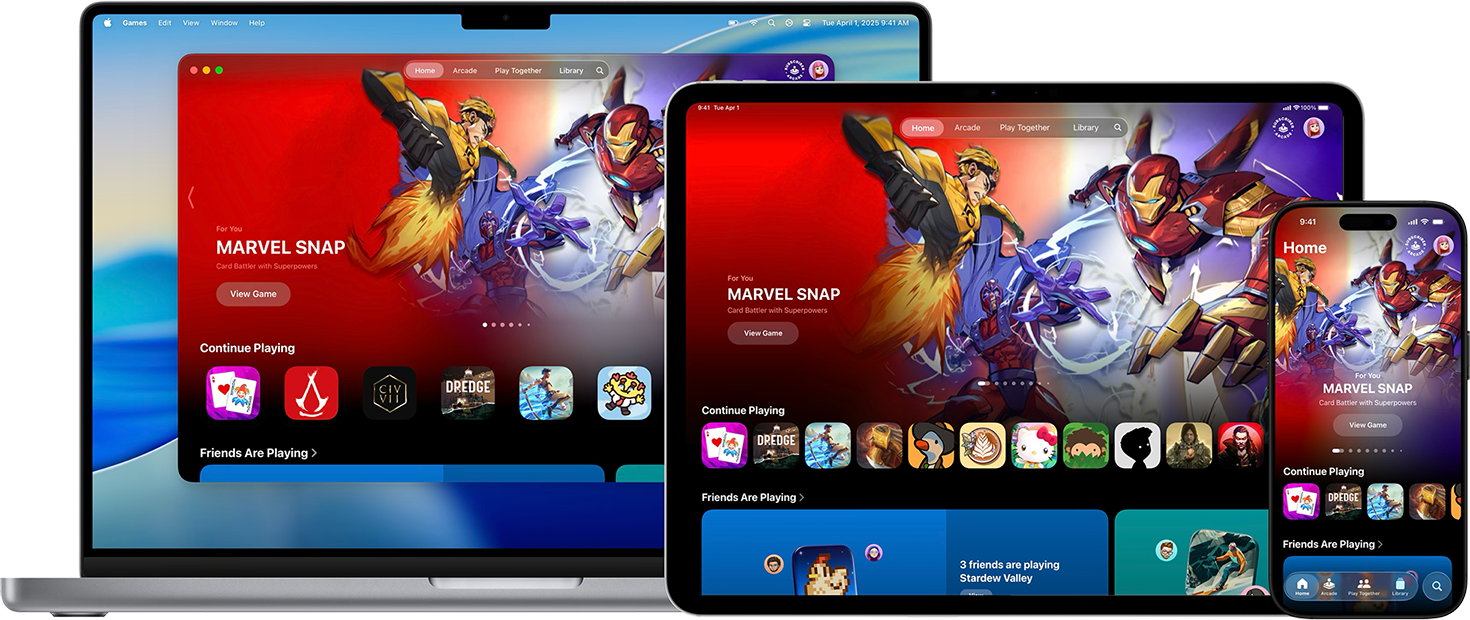
This new app introduces editorial picks, search, and In-App Event promotion, all under a gaming-specific umbrella.
Game publishers should:
- Revisit creative assets to match the visual style of this hub.
- Treat this like a new storefront, with its own optimization and targeting requirements.
Think of it as the Apple equivalent of Steam’s curated storefront: more control, more visibility, and more direct competition.
Other updates
- Live translation is now system-wide across Messages and Calls. If your app supports global collaboration or communication, now’s the time to emphasize real-time multilingual features.
- Live Activities now mirror from iPhone to Mac, enhancing cross-platform engagement potential.
- Spotlight search now launches iPhone apps from Mac (outside the EU), improving reach for utility apps.
Final Thoughts
WWDC25 shows us Apple’s continued investment in discoverability, measurement, and personalization. These updates offer a broad set of levers that ASO practitioners, product teams, and growth marketers can start preparing for now.
At Phiture, we’ll be keeping a close eye on these changes as they roll out. Expect deeper dives and tactical recommendations in upcoming ASO Monthly editions.
If you’re looking for support in adapting your app’s marketing strategy to the new App Store, we’re here to help.
Table of Contents

